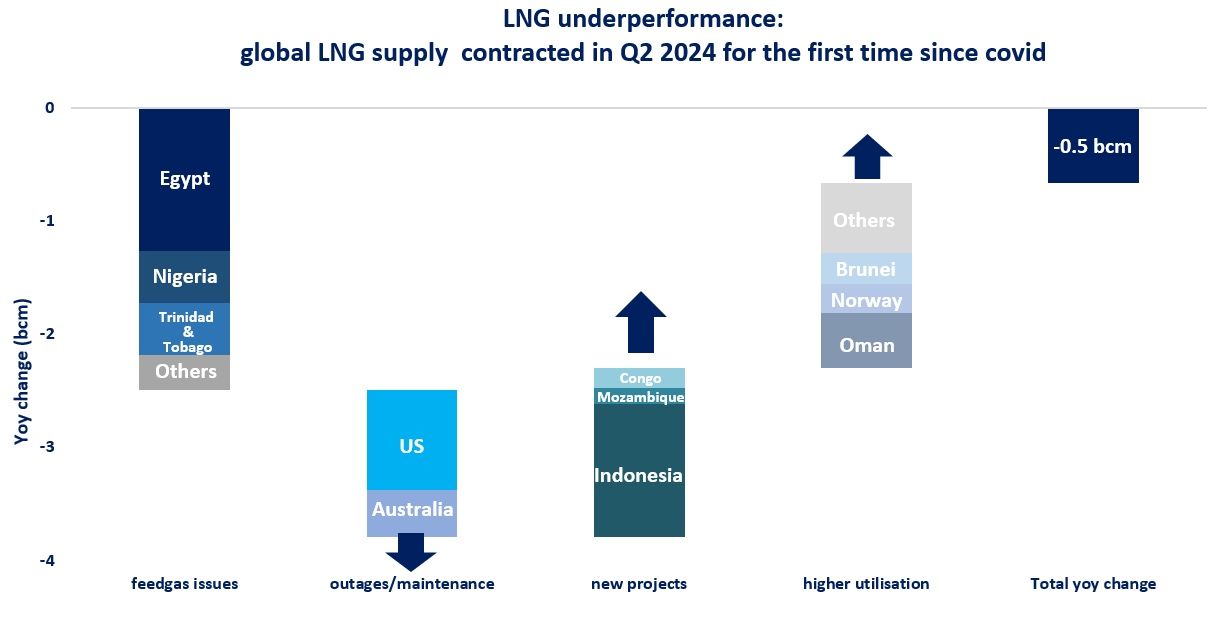

Towards a global gas market: correlation between TTF and JKM hit an all-time high of 0.95 in 2024, overpassing the previous record in 2020 when the market faced an unprecedented oversupply amid the covid-induced lockdowns.
The correlation between TTF and JKM has been rather weak and inconsistent through 2013-18, averaging at just around 60%.
The rapid rise of destination-flexible US LNG and the growing liquidity of the global LNG market increased regional interconnectivity, with the correlation between TTF and JKM rising to over 90% since 2019.
The 2022 gas crisis temporarily weakened this correlation, as the European market suffered from the gas supply shock in an asymmetric manner.
The gas market has successfully recovered since then, with the TTF vs JKM correlation rising now to an all-time high of 95% in 2024. this particularly strong interplay is driven by a number of factors, including:
(1) US LNG continued to increase and now accounts for over one-fifth of the global LNG market, allowing for greater destination-flexibility and liquidity;
(2) record low spot LNG charter rates are naturally driving down transport costs, tighten regional price differentials and allow for a greater price correlation;
(3) booming gas trade: gas trading increased sharply across all key gas hubs in 2024, with JKM volumes more than doubling. this is naturally supporting greater liquidity (and price correlation);
(4) no major asymmetric shocks: while gas markets remained tight in 2024, there was no major asymmetric supply or demand shocks, which could have distorted price movements.
Of course gas markets remains regional by essence. Europe is now dominated by mature, liquid hubs which can be used for hedging and price discovery, meanwhile in Asia we still have largely illiquid, nascent hubs.
What is your view? How will the global gas market evolve over the medium-term? what will be the impact of the next LNG mega-wave?
Source: Greg MOLNAR



